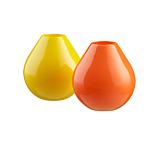Suzani Excitement Emerges in Home Interiors
Tuesday, May 12th, 2009What in the world is a Suzani? It’s the Central Asian equivalent of grandma’s heirloom quilt: handmade, handstitched, and handed-down. Suzan means “needle” in Persian, so imagine embroidery, elaborate embroidery. A wonderful, intricate craft, a Suzani represent the best type of Central Asian art. Embeded in centuries of tradition, each artist interpreted a fresh new twist to an earlier pattern.
Love these classic chairs covered in the rich colors and motifs of this ancient craft? You are not alone as consumers, designers and textile lovers discover this ancient tradition. You won’t want just one! These cloths, lavishly embroidered cover not only beds and cribs, but also tables, horses, and walls.
Talented needlewomen have produced this brilliant folk art for centuries. And when the Iron Curtain lifted, there they were! Thousands of artful, dazzling, useful, and suddenly chic suzanis. The oldest ones we know of are from the 18th century. Their designs, however — those meandering grapevines and tulips — suggest motifs from ancient Greece and the Ottoman empire.
Much like embroidered versions of hand-loomed rugs they’re sometimes used as prayer mats. The motifs — the palmette, the tulip, the teardrop-shaped botah we associate with paisleys — are familiar from carpets, but instead of being made on looms, the stylized, finely stitched designs of suzanis are worked with a kind of small crochet hook.
